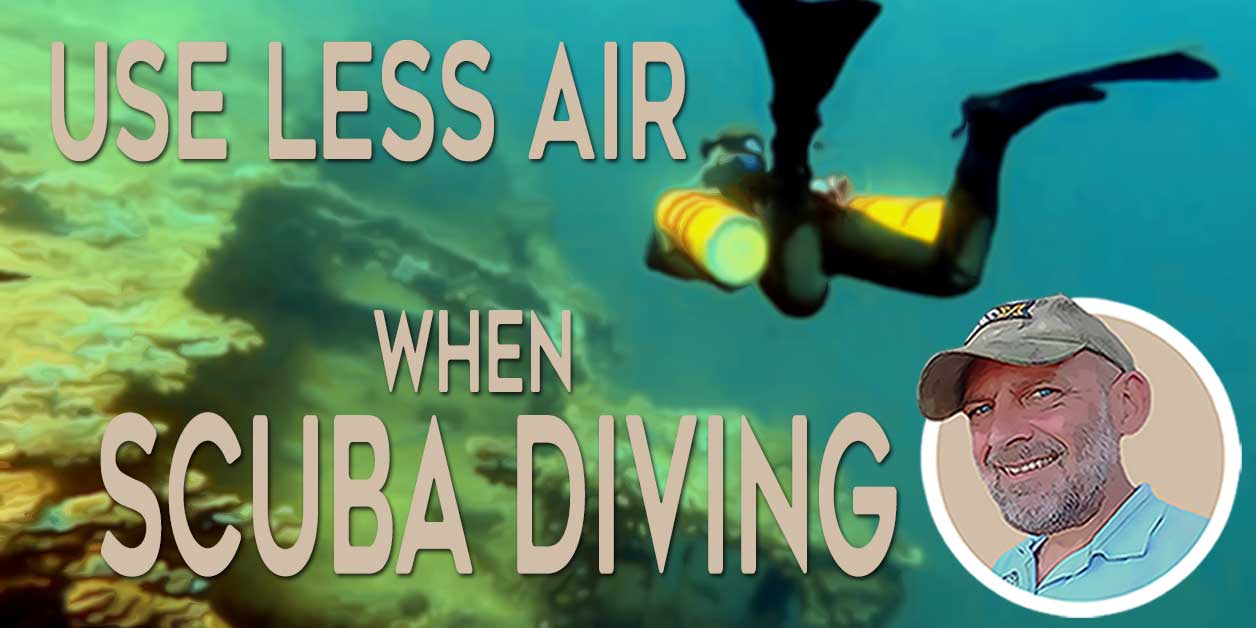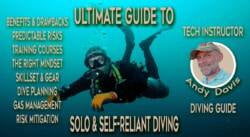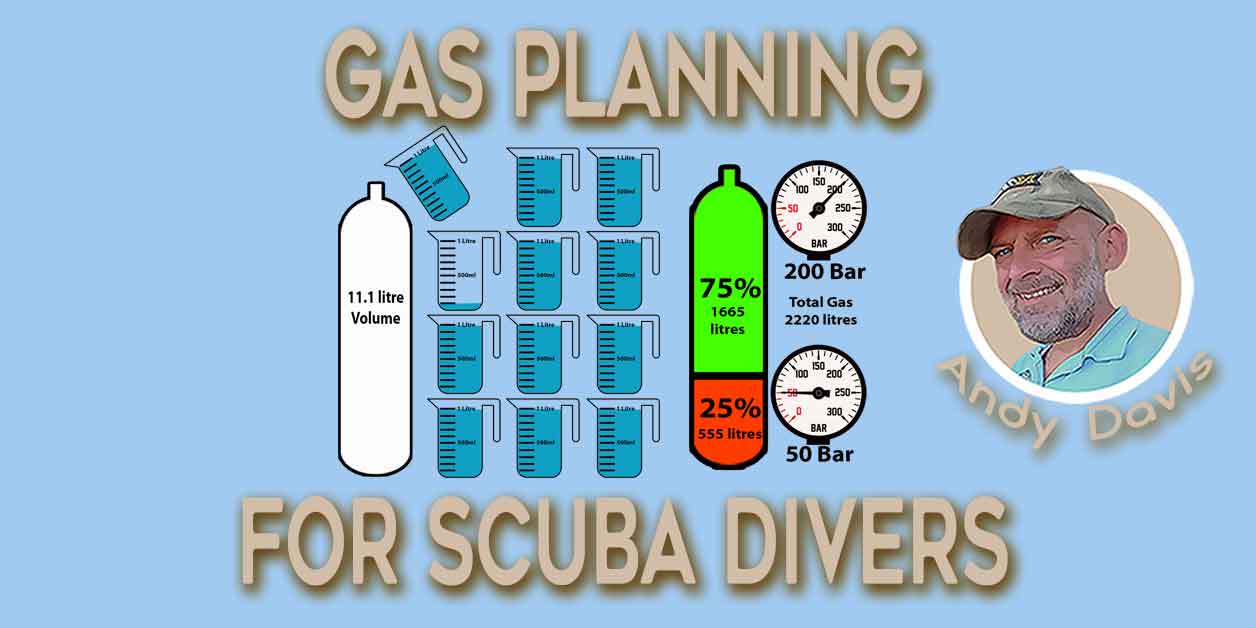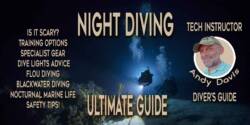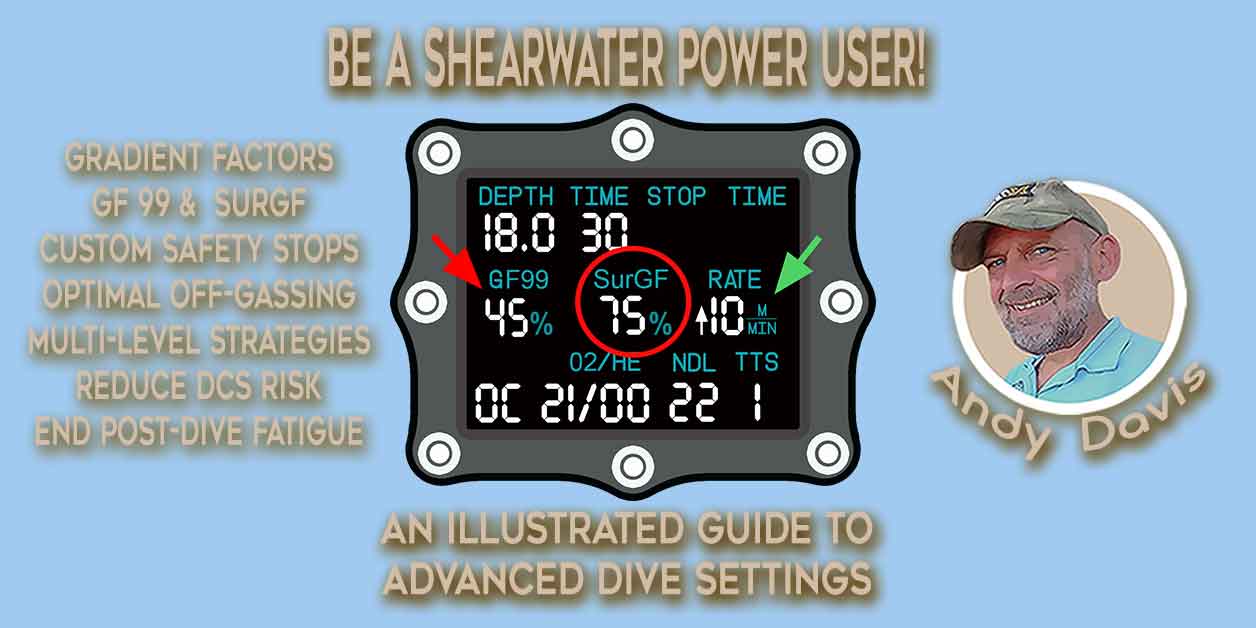The Best Ascent Speed for Scuba Diving
Is there a best ascent speed for scuba diving, or is slower simply better? This article answers that question and the answer may not be what you think!
As a full-time technical diving instructor for nearly two decades, I see lots of divers favoring extremely slow ascent rates. This is typical because the only message they have received is to “ascend slowly from every dive“.
That ubiquitous message creates the false impression that the slower your ascent rate, the safer you are. In this article, I will explain why that assumption was proven to be incorrect. Furthermore, I will describe the optimal ascent speed for minimizing bubble formation and reducing the risk of decompression sickness.
Keep reading if you want to make your scuba diving safer!
Is slower the best ascent speed?
Dive training agencies only specify a maximum ascent rate. Typically, that is between 9m (30ft) and (18m (60ft) per minute. They avoid the liability of stating what an optimal speed would be.
In addition, beginner divers are told emphatically to “slowly ascend from every dive”. Obviously, that is because fledgling buoyancy skills can allow uncontrolled rapid ascents. However, that advice sticks in mind and many divers wrongly assume it is suggesting that slower ascents are better.
In reality, everything we know about diving decompression theory suggests that ascending very slowly can increase the risk of DCS and cause greater bubble formation in the body.
As a result, it is important to know that a slower ascent is not necessarily better.
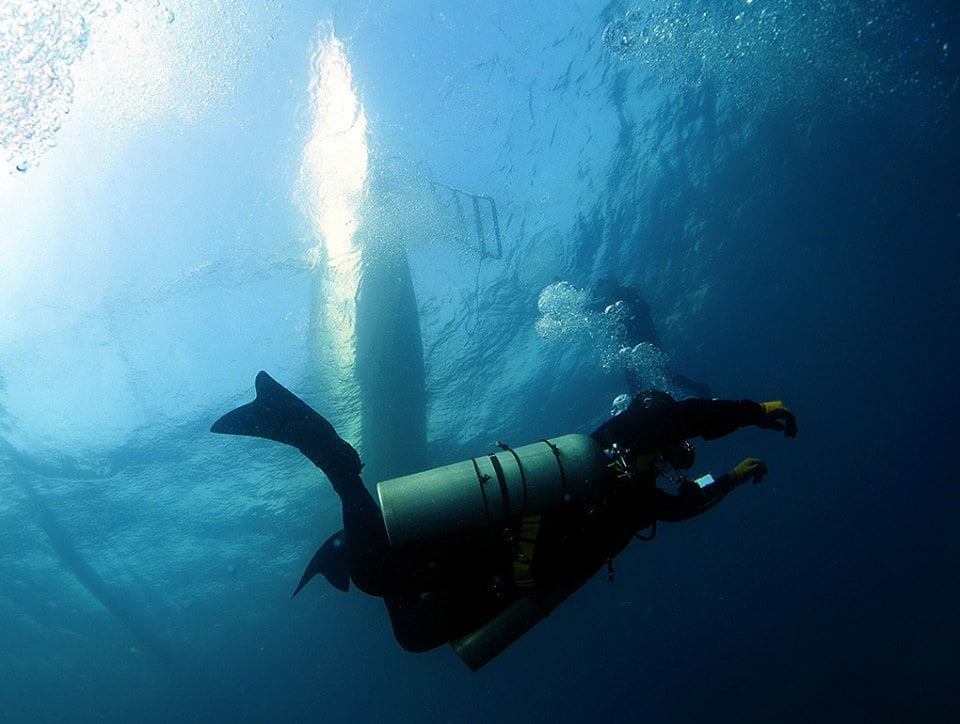
What is the problem with slower ascents?
Excessively slow ascent speeds can cause problems for scuba divers. There are two primary reasons for this:
Divers remain deeper for longer
Firstly, ascending too slowly ascent means we are at a deeper depth for a longer time. As every diver knows, we absorb nitrogen more quickly at deeper depths.
It is wrong to assume that we must be releasing nitrogen just because we are moving shallower. In many cases, we can be releasing nitrogen from our fast tissue compartments whilst simultaneously absorbing more nitrogen into slower tissues.
In principle, we increase our safety from DCS by removing as much nitrogen as possible from our bodies before surfacing. As you can see, slow ascent speeds are the antithesis of that idea. They can cause to absorb more nitrogen.
Key points on diving ascent speed and nitrogen absorption
- Slow ascents cause more nitrogen absorption
- More nitrogen in our bodies increases DCS risk
- A safe ascent should maximize nitrogen release
A pressure difference is needed to remove nitrogen
Secondly, we only release nitrogen by reducing the pressure outside of our bodies. Put simply, the pressure of nitrogen in our tissues has to exceed the ambient pressure that surrounds us. This is known as super-saturation. As a result, the nitrogen leaves our bodies as the two pressures equalize.
When we ascend very slowly from a scuba dive, we minimize the amount of time where that pressure difference exists before we surface. In essence, this means we will surface with a lot more nitrogen in our bodies after a slow ascent, compared to a faster ascent.
Key points on diving ascent speed and nitrogen release
- A pressure difference is needed to release nitrogen
- Shallower depths allow more pressure difference
- The speed of nitrogen release is determined by the pressure difference
- Getting shallower accelerates nitrogen removal
What makes a quicker ascent speed better?
Getting to a shallow depth more quickly maximizes the pressure difference that dictates the speed of nitrogen leaving our body. For that reason, the overall aim of a scuba diving ascent is to get shallow and then allow some time for nitrogen to leave our body via a safety stop.
Obviously, there is such a thing as too fast. If we ascend too quickly then the rapid change in pressure can cause bubbles to form inside of us. Luckily, we are given maximum ascent speeds to prevent that from happening.
Key points on the goal of diving ascents
- The aim is to ascend fast to a shallow depth
- At shallow depths, nitrogen is released faster
- A safety stop at shallow depth reduces nitrogen in our bodies before surfacing
- Less nitrogen in our bodies at the surface reduces our risk of DCS.
The best ascent speed for scuba diving
I have described that too-slow ascent speeds reduce our safety from DCS. Likewise, I have explained that ascending too fast can cause DCS. Consequently, there must be an ideal ascent speed somewhere in-between.
What is interesting, and not necessarily intuitive, is that an in-water stop with a relatively rapid ascent rate appears to be more effective at eliminating inert gas than a very slow ascent rate.
Peter B. Bennett, Ph.D., D.Sc
Peter Bennett conducted a study into ascent speeds. The study was published by DAN and determined that:
- 18m (60ft) /min caused the most bubbles
- 3m (10ft) /min ranked second in bubble formation
- 9m (30ft) /min caused the least amount of bubbles
This study was based on 181 dives to 25 m (82ft) for either 20 or 25 minutes. Bubbles were measured using doppler ultrasound. A higher bubble score means more bubbles were measured.
Ascent Rate | Stops | Bubble Score |
|---|---|---|
18m/min | No Stop | * |
3m/min | No Stop | 8.79 |
3m/min | 6 m for 5 min | 8.07 |
18m/min | 6 m for 5 min | 7.38 |
10m/min | No Stop | 7.34 |
10m/min | 6 m for 5 min | 5.23 |
Best ascent speed: My personal experience
I teach scuba diving as a full-time job, and many of those dives involve decompression. Consequently, avoiding DCS is a high priority. Additionally, I would have a low quality of life if I experienced decompression stress and post-dive fatigue every evening.
When I first read Peter Bennett’s study in 2007, it caused me to re-think all of my assumptions about what constitutes the best ascent rate.
As a result, I began applying a 9m (30ft) per minute ascent rate into practice on my dives. The results were dramatic. I noticed an immediate improvement in not feeling tired after diving.
Applying the best ascent speed on scuba dives
It is easy to track your ascent speed if using a dive computer. Most diving computers display ascent speed as a bar. That bar is typically broken into segments. Each segment equates to a 3m (10ft)/min increment of ascent rate.
- 1 bar = 3m (10ft) per minute
- 2 bars = 6m (20ft) per minute
- 3 bars = 9m (30ft) per minute
- 4 bars = 12m (40ft) per minute
- 5 bars = 15m (50ft) per minute
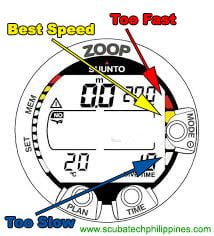
When ascending from the bottom depth to your safety stop, you should aim to be at 3 bars. If you sneak up to 4 bars, simply vent a little gas from your BCD to slow down.
As you approach your safety stop depth, hit the brakes by releasing more gas from your BCD. It can take a few meters to slow down, so start venting gas in a controlled manner when you reach 10m (30ft) depth. The aim is to slowly cruise into your safety stop without overshooting it.
If your dive computer fails, you can judge your ascent rate manually.
Best ascent speed from your safety stop
The pressure change between 5m (ft) and the surface is very large. For that reason, you should use a much slower ascent rate. This reduces the sudden change in pressure that causes more bubbles to form. As a result, you will be safer from DCS and feel less tired after diving.
- Ascend from 5m (16ft) to the surface no faster than 3m (10ft) per minute.
- Traveling from the safety stop to the surface should take at least two minutes.
- Some experienced divers prefer to ascend at 1m (3ft) per minute; allowing 5 minutes to reach the surface.
Use the best ascent rate for safer scuba diving
In conclusion, you should not assume that a slower ascent rate is safer. While dive training agencies only specify a maximum ascent rate, excessively slow ascent speeds can cause problems for divers.
A slow ascent means a longer time at deeper depths where nitrogen absorption is higher. In turn, this leads to more bubbles and an increased risk of DCS.
The best ascent speed is around 9m (30ft) per minute. However, always ensure that you conduct a safety stop to allow nitrogen release before surfacing.
Remember, safety is always the top priority when scuba diving. So, knowing the best ascent speed for minimizing bubbles and reducing DCS risk makes your dives safer and less tiring.
Best ascent speed for diving references
What Ascent Profile For The Prevention Of Decompression Sickness” Divers Alert Network
About The Author

Andy Davis is a RAID, PADI TecRec, ANDI, BSAC, and SSI-qualified independent technical diving instructor who specializes in teaching sidemount, trimix, and advanced wreck diving courses.
Currently residing in Subic Bay, Philippines; he has amassed more than 10,000 open-circuit and CCR dives over three decades of challenging diving across the globe.
Andy has published numerous diving magazine articles and designed advanced certification courses for several dive training agencies, He regularly tests and reviews new dive gear for scuba equipment manufacturers. Andy is currently writing a series of advanced diving books and creating a range of tech diving clothing and accessories.
Prior to becoming a professional technical diving educator in 2006, Andy was a commissioned officer in the Royal Air Force and has served in Iraq, Afghanistan, Belize, and Cyprus.
In 2023, Andy was named in the “Who’s Who of Sidemount” list by GUE InDepth Magazine.
Purchase my exclusive diving ebooks!
Diving ascent rate FAQ
An ascent in scuba diving is when a diver leaves the bottom and returns to the surface. It is common to conduct safety or decompression stops during the ascent.
If a scuba diver ascends too fast, nitrogen bubbles can form in their body. This is known as decompression sickness (DCS), or “the bends”.
A normal ascent in scuba diving involves traveling to the surface at a safe speed. Divers usually conduct a safety stop in shallow water. This differs from emergency ascents or decompression stop ascents.
The ascent rate in scuba diving refers to the speed (m/min or ft/min) at which a diver travels to the surface. A safe ascent rate allows the diver to decompress and release excess nitrogen gas before surfacing. This helps prevent decompression sickness.
A safe ascent rate is slow enough to avoid harmful bubble formation, but fast enough to promote nitrogen removal from the body. 9m/min (30ft/min) was shown to be optimal in scientific study.
Originally posted 2013-10-16 15:05:50.







